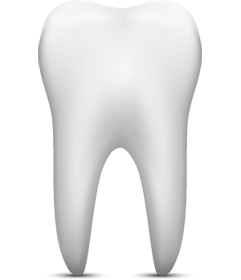During your initial tooth development, the pulp (the “nerve” inside) is responsible for the formation and growth of the hard part of the tooth.
Your tooth consists of two main parts: the crown, which is the part of the tooth above the gum and visible in your mouth; and the root or roots, which is the part of the tooth that lies beneath the gum and is surrounded by bone. Inside each root is a channel (or channels) that run/s the length of the tooth. This channel is the root canal and contains the pulp (nerves, blood vessels, and soft tissue), which is often referred to as the “nerve” of the tooth.
During your lifetime, the pulp may become diseased due to a variety of reasons including decay, trauma, deep fillings, cracks or periodontal disease. These injuries to the nerve/pulp are irreversible and may quickly cause pain (but can sometimes be painless and symptom-free), inflammation or even infection of the tooth and the surrounding bone and soft tissue. To eliminate an inflamed or infected pulp, a root canal treatment is the therapy of choice to keep your tooth; another alternative would be to remove the tooth entirely: a tooth extraction. Since a “root canal” (endodontic therapy) is concerned with removing only the pulp/nerve, the root/s and remaining “tooth” will continue to function normally.

Endodontic therapy can usually be accomplished in one or two visits. After we have completed your treatment, we will send a report to your dentist. We advise you to return to your dentist promptly to have a permanent filling or crown placed on your tooth.
Today, most patients are pleasantly surprised that their root canal treatment is often no more uncomfortable than having a filling.
